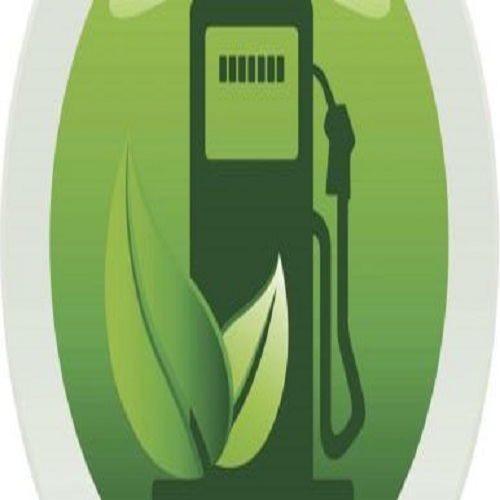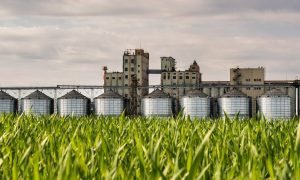The Promise of Bioeconomy as a Solution for Sustainability

Extreme weather and climate change are major risks, with the UNEP COP28 report warning of likely surpassing the 1.5°C warming threshold. Fossil fuels, which make up 81% of global energy, are a key issue. Transitioning to renewables like bioenergy is essential. India’s 2G ethanol projects and bioplastics offer sustainable alternatives, requiring supportive policies for growth.
A recent report by the World Economic Forum (WEF) identifies extreme weather events and critical changes to Earth’s systems as the top long-term risks to humanity.The urgency of the situation is further underscored by the United Nations Environment Programme (UNEP) COP28 report, which warns that exceeding the 1.5°C warming threshold is becoming increasingly likely and could have devastating consequences.The overdependence on fossil fuels is a significant contributor to these factors. The International Energy Agency’s World Energy Outlook 2023 highlights that fossil fuels comprise over 81 percent of the global energy mix, accounting for over 73 percent of human-caused greenhouse gas emissions.
Transitioning to cleaner and greener energy sources is imperative. To achieve this transition, exploring alternative, low-carbon energy sources is crucial. The COP28 UAE consensus includes an unprecedented reference to transitioning away from all fossil fuels in energy systems “in a just, orderly, and equitable manner”. Participating nations were urged to triple their renewable power and double their energy efficiency by 2030 to reach net-zero emissions by 2050. Renewable energy sources such as bio-energy, solar, wind, and hydropower will play an important role in achieving this goal.
Bioeconomy has emerged as a promising solution to facilitate sustainable development. Bioeconomy is defined as a knowledge-based system that utilises renewable natural resources such as biomass for the production of energy, materials, and services. India’s abundant sunlight, land resources, and agriculture can be leveraged to this end. The annual biomass availability in India is estimated to be around 750 million metric tonnes (MMT), with an additional surplus biomass availability of approximately 230 MMT per year. The installed capacity for biomass production in the country has shown steady growth, achieving 10 gigawatts (GW) by FY22, marking a compound annual growth rate (CAGR) of 4 percent. Bio-based products developed from renewable agricultural resources are environmentally friendly and less toxic compared to their fossil-based counterparts.
Biofuels for Sustainable Mobility
The transportation sector is one of the largest contributors (around 20 percent) of greenhouse gas emissions. If left unchecked, greenhouse gas emissions from transportation could increase by as much as 60 percent by 2050. Aviation, which is a ‘hard-to-abate’ sector, generates approximately one billion tonnes of greenhouse gas emissions per year, accounting for around 2-3 percent of total global emissions.As part of sustainable climate action, it is critical to decarbonise transportation by adopting cleaner and greener low-carbon alternatives to fossil-based fuels, such as biofuels.
Biofuels are a crucial socio-economic and environmental enabler. Various types of biofuels, such as ethanol, sustainable aviation fuel, biodiesel, and marine biofuel, are gaining prominence for their renewable and low-carbon characteristics. Biofuels are distinguished by their carbohydrate composition and, when blended with gasoline, serve as effective oxygenating agents, facilitating complete combustion. This results in significantly lower carbon emissions and minimum particulate matter, making a pivotal contribution to environmental conservation. Biofuels also play a transformative role in bolstering rural economies. Farmers benefit by gaining an additional revenue stream through the sale of agricultural residues. Biofuel plants in the vicinity of farmlands contribute to employment creation and entrepreneurship opportunities for rural households. The establishment of a farm-to-wheel value chain amplifies the impact of biofuels on carbon intensity reduction.
Decarbonising Mobility with Ethanol
A number of factors contribute to ethanol usage as a biofuel:
- Renewable: Ethanol is produced from biomass, a renewable resource that can be replenished through sustainable farming practices.
- Gasoline blending: Ethanol can be blended with gasoline in various ratios (e.g., E10 for 10-percent ethanol) in existing vehicle infrastructure, facilitating a gradual transition away from fossil fuels.
- Oxygenating agent: Ethanol acts as an oxygenating agent when blended with gasoline, promoting cleaner and more complete combustion, thereby reducing harmful tailpipe emissions.
Ethanol: Feedstock and Its Impact on Carbon Footprint
Ethanol production methods are categorised based on the type of feedstock used, with each method impacting its carbon footprint.
- First-generation (1G) ethanol is derived from sugary or starchy crops like corn or sugarcane. While offering a lower carbon footprint compared to gasoline, it is categorised as low-carbon ethanol. Studies indicate that sugary feedstock-based ethanol has life-cycle emissions of approximately 34-50 grams of CO2 equivalent per megajoule (gCO2e/MJ). Typical well-to-wheel emissions, i.e., comprising all emissions related to fuel production, processing, distribution, and use of gasoline, amount to ~94 gCO2e/MJ. This translates to a 50-63 percent reduction in greenhouse gas emissions compared to gasoline.
- Second-generation (2G) ethanol, on the other hand, utilises lignocellulosic biomass as feedstock. This includes non-food sources like agricultural and forestry residues. Due to its feedstock, 2G ethanol achieves an ultra-low carbon footprint. Studies suggest that 2G ethanol derived from rice straw has life-cycle emissions of ~17 gCO2e/MJ, resulting in an ~81 percent reduction in GHG emissions compared to gasoline. This decrease highlights the potential of 2G ethanol as a biofuel with a significantly lower environmental impact.
This distinction explains how the choice of feedstock plays a crucial role in overall carbon-footprint reduction. While 1G ethanol has a positive environmental impact, 2G technology unlocks a greater potential for sustainable biofuel production.
IOCL’s 2G Ethanol Biorefinery
In August 2022, India’s Prime Minister Narendra Modi unveiled Asia’s first 2G ethanol biorefinery at the Indian Oil Corporation Limited’s (IOCL) Panipat complex in Haryana. The biorefinery deploys Praj’s proprietary 2G technology for the production of ethanol using rice straw as feedstock. The biorefinery is capable of processing two lakh tonnes of rice straw annually to generate around three crore litres of ethanol, which could benefit more than one lakh farmers and create around 1,500 jobs for the rural youth. Importantly, it aims to address pollution from stubble burning by eliminating around 320,000 MT of CO2 every year, which is equivalent to replacing nearly 63,000 cars on the road annually. The indigenous production of ethanol is also estimated to result in foreign exchange savings worth INR 55-60 crores every year on imported crude oil. This project will help achieve 20 percent ethanol blending and is aligned with the idea of Atmanirbhar Bharat and the Make in India initiative.
Bioplastics as a Solution
The environmental crisis is exacerbated by uncontrolled plastic usage. Global plastic production has skyrocketed, reaching a staggering 400.3 million tonnes annually by 2022.However, less than 10 percent of this plastic is recycled, with the remainder ending up in landfills or polluting ecosystems, threatening wildlife and human health.
Bioplastics, being biodegradable and compostable, offer a sustainable solution to plastics sourced from petrochemicals. Bioplastics are produced through the biochemical and thermochemical processing of bio-based feedstock. Examples include polylactic acid (PLA) and polyhydroxyalkanoates (PHA), as well as thermoplastic starch (TPS) and cellulose, which offer functionality advantages for diverse applications. Although their use is increasing, as of 2022, bioplastics constituted less than 1 percent of the annual 400.3 million tonnes of plastic produced. However, global bioplastics production is expected to reach 6.3 million tonnes by 2027—up from 2.2 million tonnes in 2022.South-East Asia is the current hub for bioplastics production due to low production costs and a favourable ecosystem. India, with its cost-effective production environment, government support, and abundant resources, has the potential to be a market leader in bioplastics.
Policy Recommendations for Biofuels and Bioplastics
Supportive policy frameworks are required to unlock the full potential of the bioeconomy. For biofuels, policies like the National Biofuel Policy have already been successfully implemented in India. Beginning from a 5-percent ethanol blending programme in five states in 2003, in 2022, India achieved the target of E10 blending six months ahead of time. The earlier target of 2030 for E20 has been advanced to 2025.
Boosting 2G Ethanol in India
- Increased viability gap funding: Extending the PM Jeevan Yojana for “bolt-on” models (bagasse used with 1G plants) will help augment capacity building.
- Differential pricing: Devising policy that rewards low-carbon ethanol production using 2G feedstocks.
- Assured off-take and export: Guaranteed purchase by fuel retailers and streamlining of exports will attract project developers to invest in the sector.
- Life-cycle analysis (LCA) and carbon credits: Introducing and defining a clear framework for computation of LCA based on different feedstocks can facilitate carbon trading mechanisms.
Further, the introduction of policies for flex fuel vehicles and electric vehicles can help diversify the available sustainable solutions. The hard-to-abate aviation sector accounts for ~3 percent of total greenhouse gas emissions and is expected to grow. However, global mandates such as the Carbon Offsetting and Reduction Scheme for International Aviation (CORSIA) guidelines and the International Civil Aviation Organization’s (ICAO) goal to achieve net-zero in international aviation by 2050 have necessitated the use of sustainable aviation fuel (SAF). A national policy to develop industry ecosystem and mandate the use of SAF in Indian skies will help achieve these objectives. Viability gap funding, additional subsidies, and funding for research and development (R&D) can be implemented in the policy framework.
For bioplastics, promoting innovation in biodegradable materials and establishing robust collection and composting infrastructure are critical. Policymakers can also consider introducing and implementing bans or restrictions on single-use plastics and introducing eco-taxes on conventional plastics to encourage a shift towards bioplastics. Strict policy measures to prevent greenwashing and fake imitates should also be introduced.
Bio-Based Solutions and Global Commitments
The escalating challenges of climate change and environmental degradation necessitate a paradigm shift towards sustainable solutions. Mainstreaming bioeconomy is fast gaining acceptance as a sustainable climate action. By propagating a bioeconomy that functions on the circularity principle will help strike a balance between people, planet, and profit. Initiatives like the IOCL’s 2G ethanol biorefinery demonstrate that the adoption of bio-based technologies not only mitigates carbon emissions but also revitalises rural economies and addresses pressing environmental issues.
In the Global Energy Transition Index released by the WEF on 19 June 2024, India ranked 63rd out of 120 countries surveyed, improving from its 67th position in the previous year. This upward trajectory highlights India’s growing commitment to sustainable energy solutions, including bioeconomy practices.
However, the bioeconomy’s full potential can only be realised through the implementation of supportive policy frameworks. Policies that incentivise the adoption of biofuels and foster innovation in bioplastics can help pave the way for a sustainable future.
Source Link : https://www.orfonline.org/research/the-promise-of-bioeconomy-as-a-solution-for-sustainability
















